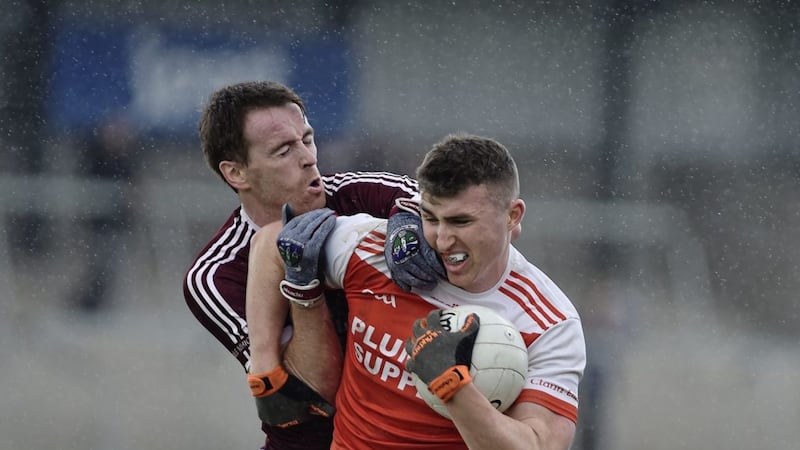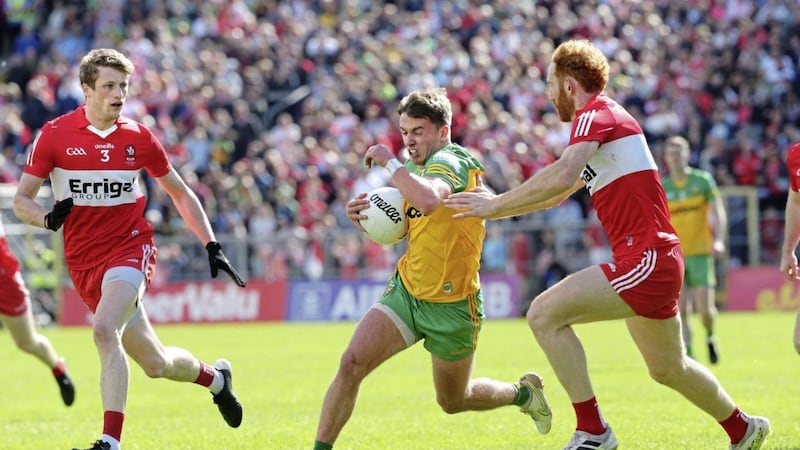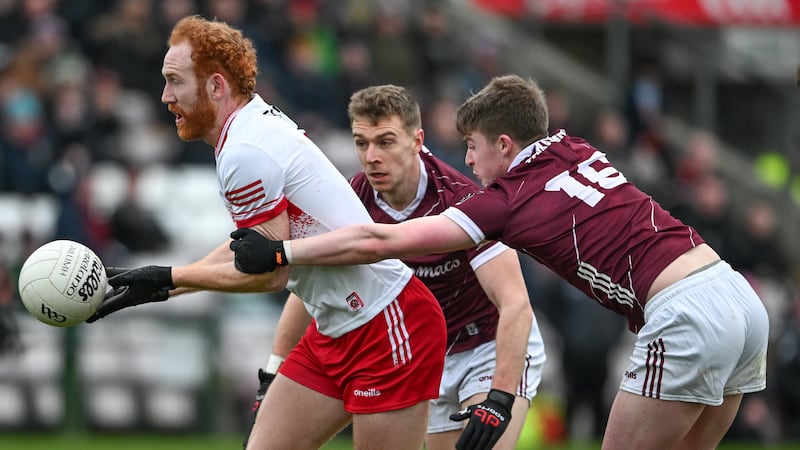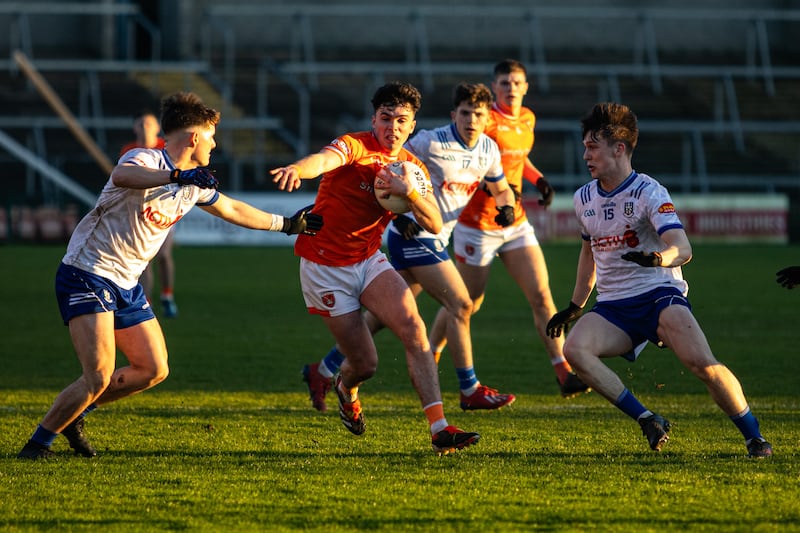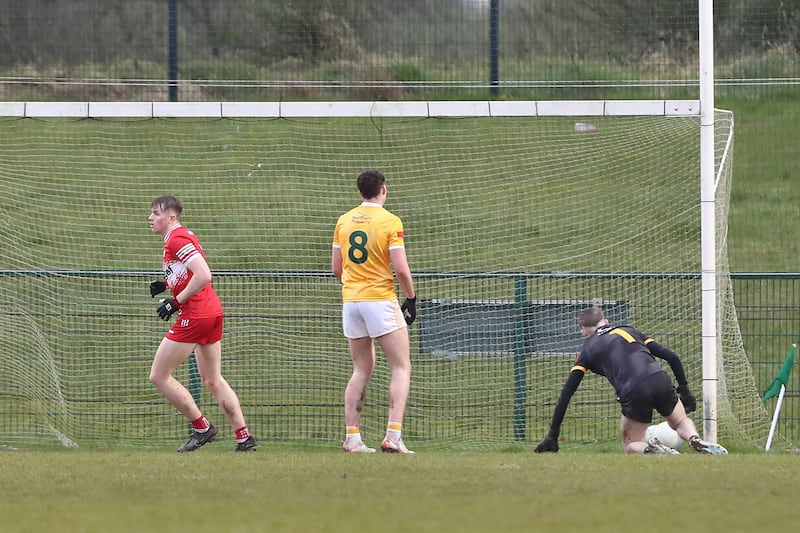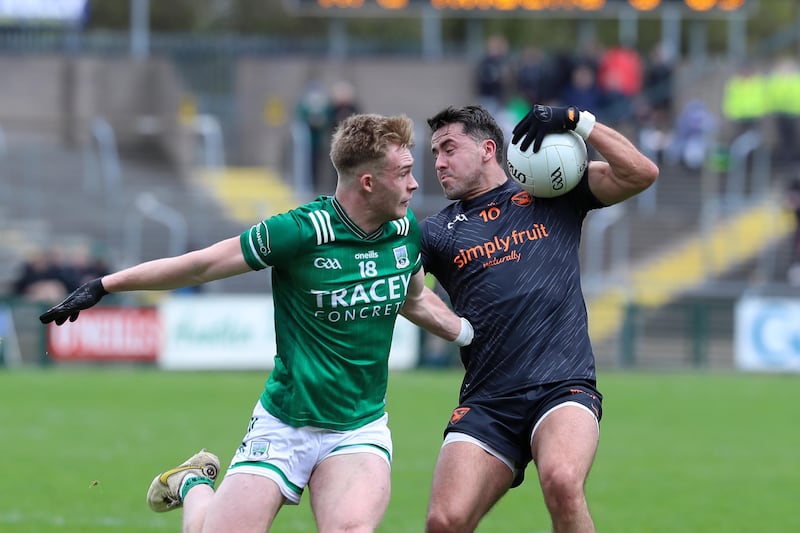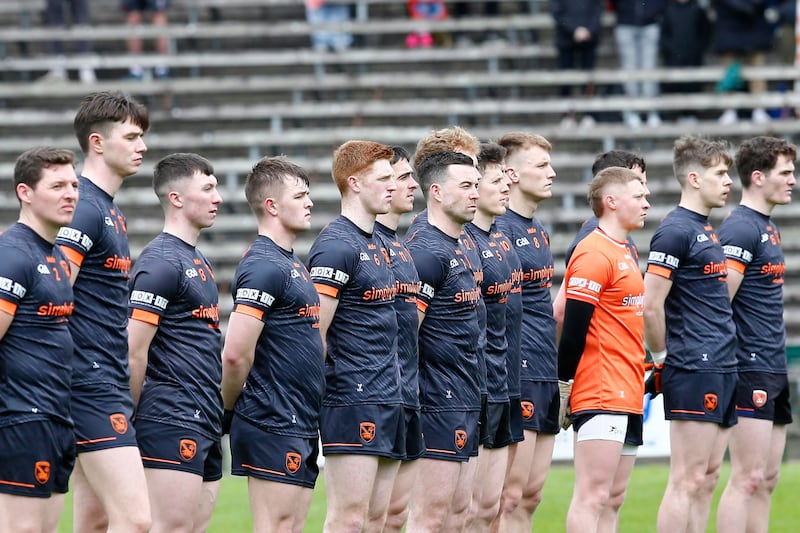AGAINST the backdrop of delighted faces on the pitch and in the stands, the Clann Eireann players and management trooped off the Athletic Grounds a fortnight ago after beating Ballymacnab sealed a spot in their first Armagh senior final in 53 years.
“All of Lurgan was behind us,” said home-grown manager Tommy Coleman, “Because they know that if we can do it, they can do it.”
A rising tide lifts all boats.
Lurgan is a remarkable success story and one of the most valuable lessons that can be learned from the GAA-mad county Armagh town is that it’s the investment of time, not money (although more of that would be welcome of course) that really makes the most of the resources available.
Success has been built from grassroots level and in the last decade Clann Eireann have been there or thereabouts at most underage grades and now the senior team stands on the brink of making the definitive breakthrough.
They’ll have to get past Crossmaglen, Armagh’s definitive big dogs, to do that but whether they win the Gerry Fegan Cup on Sunday-week or not, with the likes of Tiernan Kelly, Conor Turbitt, Shea Heffron and Barry McCambridge in their ranks and more talented youngsters coming through, you would expect the club to be competing for it for years to come.
Their success all boils down to having a structure in place which ensure that there’s quality coaching and regular games for the players and putting the time and effort into developing them instils a love for their club and their game.
Clann Eireann’s rise from the Orchard county alsorans to the summit of the game is the result of 20 years’ of hard work: Two decades of selfless commitment by an army of volunteer coaches and administrators who have engaged with local primary schools and encouraged and nurtured players through to senior level.
They have been leading the way but their neighbours aren’t far behind.
Lurgan is far from a one-club town. On the contrary, it is absolutely coming down with clubs and the debate over whether there are too many has been ongoing for half-a-century now. Alongside Clann Eireann, local rivals Clan na Gael (who pushed Crossmaglen all the way in the senior championship preliminary round this year), St Peter’s and St Paul’s are also fishing in the same player pool and all four clubs are making the very best of the talent that is available to them.
In the last seven years, all four town clubs have won the Armagh intermediate championship (last year Clan a Gael beat St Paul's in the final) and that achievement is all the more notable when you factor in that the Eire Og, Sarsfields, Wolfe Tones and Aghagallon (just over the border in county Antrim) clubs are only a few miles out the road and that Lurgan is also home to the Sean Treacy’s club which stands out as an island of hurling in the midst of an ocean of football.
And like most urban clubs, the Lurgan quartet have to deal with competition from other sports, most notably soccer with NIFL outfit Glenavon, Lurgan Celtic and Sunnyside among the prominent clubs and there are the obvious social distractions to contend with as well.
Facilities are limited too. St Paul’s has two pitches but the others have just the one so during the winter period they struggle to get a decent surface to train on. That issue is compounded by the fact that St Ronan’s College – Hogan Cup winners in 2018 – still doesn’t have its own pitch and has to rely on using the Lurgan clubs’ facilities for training.
And ladies’ football has taken off. A decade ago, Clann Eireann would have been the only show in town for ladies’ football but all the other clubs have followed suit and this year St Peter’s celebrated winning the ladies’ junior football championship.
It’s a good problem to have, but where do you put them all? Surrounded by streets and housing estates, the clubs have no room for physical growth. There are no neighbouring fields in Lurgan that can be bought or maybe even donated by a local farmer and the clubs must be green with envy when they travel around the county and see the facilities some of their rural rivals boast.
It’s a situation that urgently needs to change and it’s high time that the local council stepped in with a plan to invest in a sporting hub for the area on which GAA clubs – and other sports too – can utilise.
But even without the facilities that country clubs have been able to develop, Lurgan’s success stands out, especially when you compare their achievements with the picture in some other towns.
Urban decay has robbed Down of a once valuable resource. Nowadays Newry has a population of over 180,000 at the last census but despite the numbers on their doorstep it’s now 60 years since Newry Shamrocks won Down’s senior championship and 53 since their neighbours Newry Mitchels won their county’s most coveted prize.
Players from those sides like Tony Hadden (Shamrocks) and Sean O’Neill (Mitchels) graced the great Mourne county teams in the golden era of the 1960s but nowadays the once mighty Shamrocks are languishing in Division Three while the Mitchels finished second-from-bottom in Division Four this year with just one win all season. Newry Bosco is also a Division Three club.
West Belfast has no shortage of clubs but in recent years the traditional urban powerhouses of St Gall’s and St John’s have faded and country boys from Cargin and Creggan are the top dogs. Incidentally, Aghagallon who play Creggan in this year’s senior final, include the goalkeeper, full-back, midfielder and centre half-forward from the St Ronan’s College Hogan Cup-winning side and are also a club on the rise.
In Derry city, the Steelstown club has made it to the finals of the men’s and ladies’ intermediate championships which is a welcome development but neighbours Doire Colmcille and Sean Dolan’s both campaign in the junior ranks.
So what makes a successful club? Is it the clubhouse, the pitches, the stands?
All of those things help but it’s the spirit that really counts and that spirit is alive and well in Lurgan where a roadmap has been created for others to follow.
If they can make it there, you can make it anywhere.
